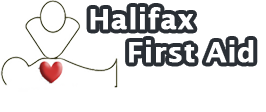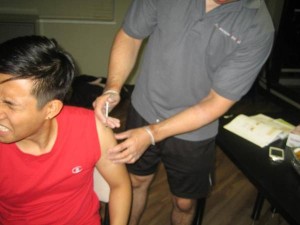As trained first aider and had a first aid training, it is not uncommon for you to care for or encounter individuals with infectious or communicable disease. Some individuals may appear completely well despite their infection while others may present general symptoms of infection, such as:
- Fever
- Vomiting or diarrhea
- Profuse sweating
- Lesions or rash on the skin
- Coughing or sneezing
- Headache, abdominal pain, stiff neck
The first aid measures you provide will depend on the immediate needs of the patient. But most commonly, your role is to transport the individual or activate emergency health service, maintain an open airway, monitor and care for shock, give nothing by mouth, and keep patient warm. However, there are a few things that you have to consider. If the disease is infectious, you must protect yourself and others from contracting the disease. You can find a lot of online CPR training that will help you avoid from getting infected from any communicable diseases and other more.
Usually, the patient who needs your medical help due to illness will not require you to take any special steps to protect yourself. You should:
- Avoid touching body discharges. If possible, wear protective gloves before caring for the patient.
- Avoid direct contact with body fluids, blood, stools, urine, and other contaminated items such as clothing and bed linens.
- Make sure to use protective gloves that are free of breaks, holes or tears.
- If eye contamination is likely, such as when there is spurting blood, vomiting or coughing, use protective goggles. Wear a mask and a gown when necessary.
- If CPR or rescue-breathing is necessary, use a bag-valve-mask or a one-way-valve unit.
- Avoid touching your face, especially when you have touched contaminated articles.
- Wash your hands before providing care for other patients.
If you have administered care for a patient with communicable disease, it is recommended that you inquire about the diagnosis of the patient. Ask your healthcare provider if you need to take any special precaution or if you need immunization or prophylactic antibiotic therapy. When caring for patients with AIDS, you should wear gloves and avoid contact with the patient’s blood, body discharges, and body fluids.
Make sure to disposes contaminated articles and supplies properly. If your clothes have been contaminated, remove it and place in a plastic bag. All contaminated clothes should be washed separately, as soon as possible, using laundry products with disinfectant. Use disinfecting soap when you shower. Make sure to clean your hair and fingernails properly.
Usually, the emergency department will inform you if they believe that the patient’s condition require special procedures. Be sure to follow the recommendations by the doctor.
When providing first aid, it is quite difficult to determine those who have communicable disease; therefore, it is recommended that you consider all patients as having infectious disease. Make sure to follow universal precaution unless special protective measures are advised or necessary. Learn more about universal precaution and first aid, by taking the workplace approved First Aid Course.

